Our website uses cookies to improve your experience. By continuing to browse the site, you are agreeing to our use of cookies as per our privacy policy.
A Class ACT
St Peter’s Basilica
1 October 2023
|
Mark Thornton
Tell Us About St Peter’s Basilica
St. Peter’s Basilica is one of the largest Christian churches in the world, and spans an impressive 23,000 square meters. Built upon the historic grounds of an ancient chariot racing stadium, it stands as a testament to centuries of history, ceremony and artistry. The original basilica was constructed in the 4th century by Emperor Constantine and served multiple roles, including for religious services, as a cemetery and funeral banquet room.
By the turn of the 16th century, Constantine’s building had fallen into disrepair and so in 1506, Pope Julius II commissioned a new basilica. This ambitious rebuilding project spanned over 120 years and involved several renowned artists and architects of the era, including Michelangelo, Maderno and Bernini. Michelangelo’s contributions focused on the Greek Cross section and the stunning dome, which was later completed by Della Porta in 1590.
In the early 1600s, Pope Paul V tasked Maderno with extending the basilica’s eastern end, also adding chapels and a grand façade. Bernini later added the iconic colonnade and also led the interior decoration, finishing the transformation of the basilica into the extraordinary structure seen today.
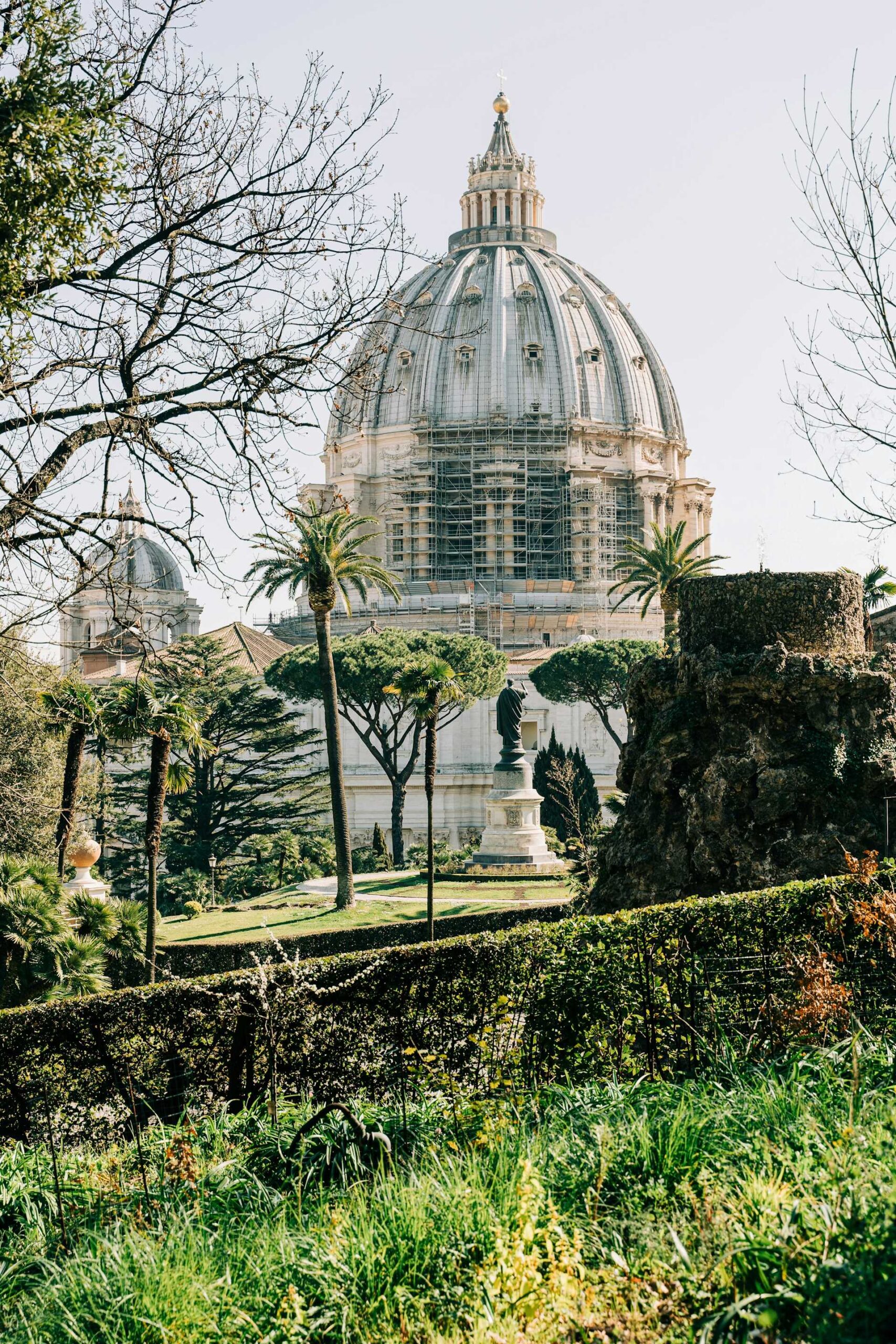
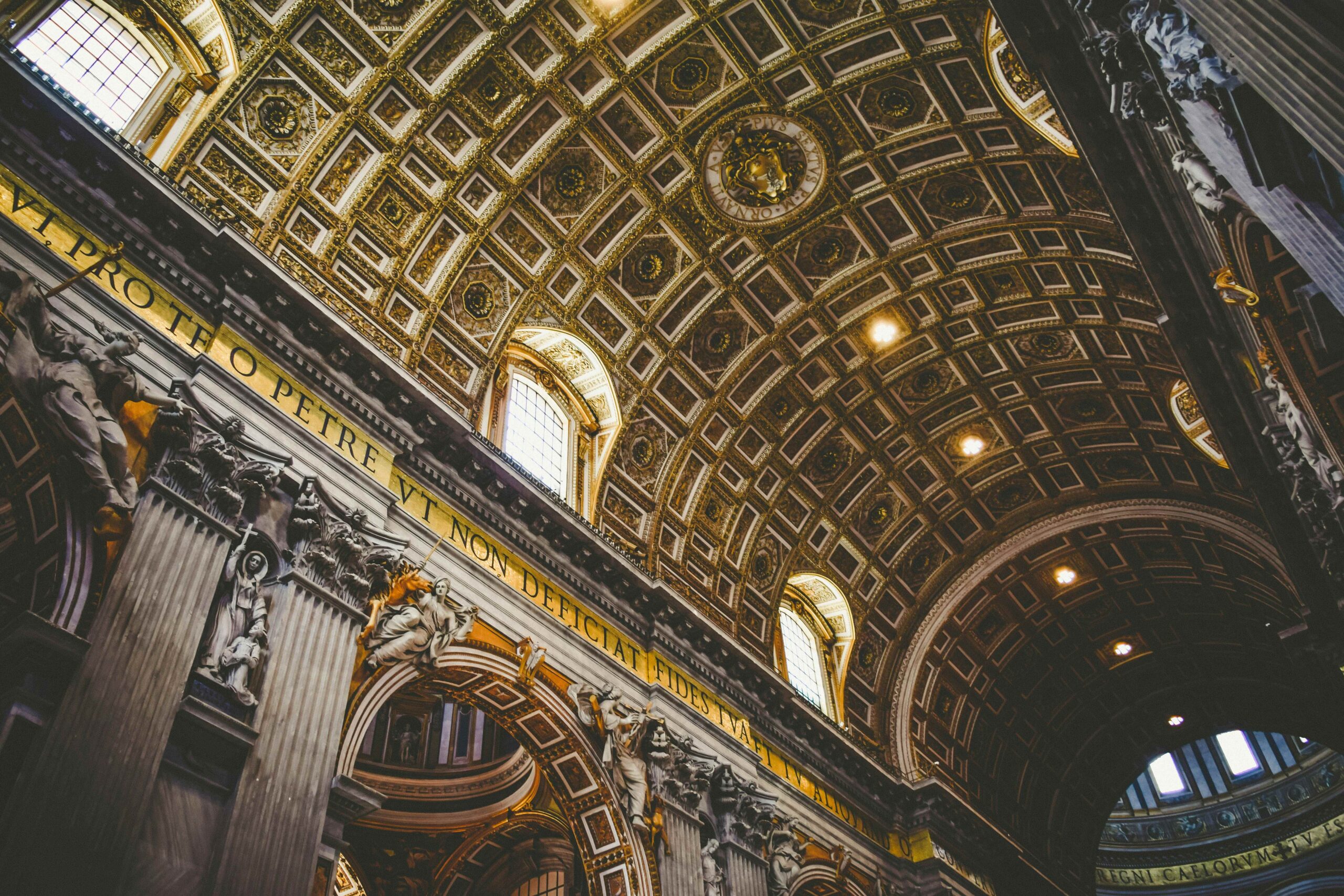
Mark explains:
“My fascination with St. Peter’s Basilica dates back to 2002, during a holiday in Rome. I was taken aback by its monumental proportions and the meticulous work that clearly went into its creation. It is a truly amazing building: its scale, internal design and workmanship are just superb.”
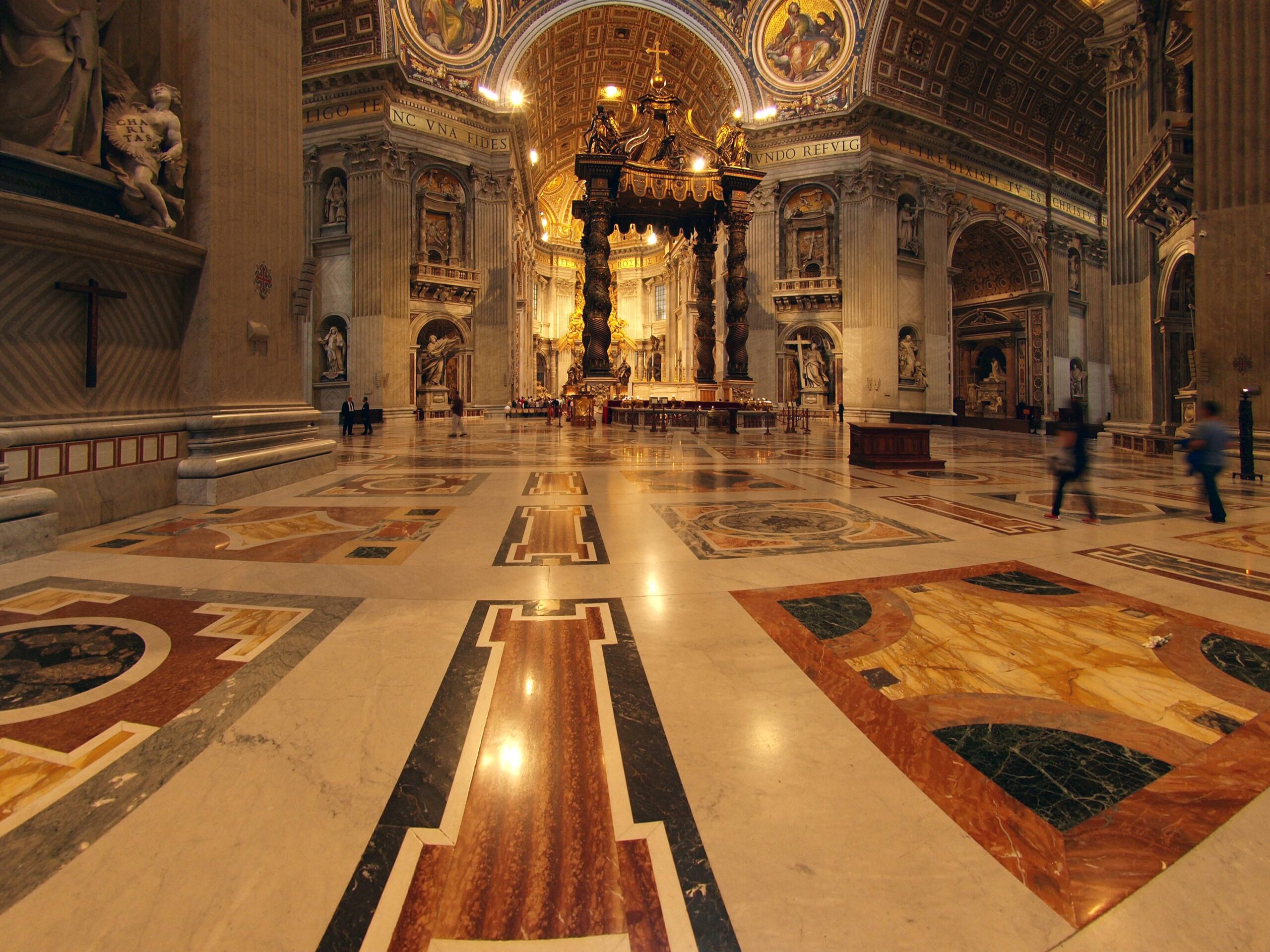
St. Peter’s Basilica is built using a variety of materials, with a special focus on porphyry – a type of igneous rock containing crystals, valued for its deep, rich hues and remarkable durability. The term comes from the Ancient Greek word for “purple” and symbolised wealth and power in Roman times.
The basilica’s intricate stone floor is a particular highlight, featuring hand-cut porphyry pieces with stunning details. This includes a striking large red-purple stone circle that Charlemagne reportedly knelt upon to be crowned the first Holy Roman Emperor by Pope Leo III on Christmas eve in the year 800.
Although there isn’t much detailed information about the precise techniques used to cut and place the stone, the attention to detail and skill required are evident in the flawless execution of the basilica’s intricate patterns.
Reflecting on this, Mark is in awe: “When you consider it was all cut and laid by hand over 400 years ago, it’s incredible”.
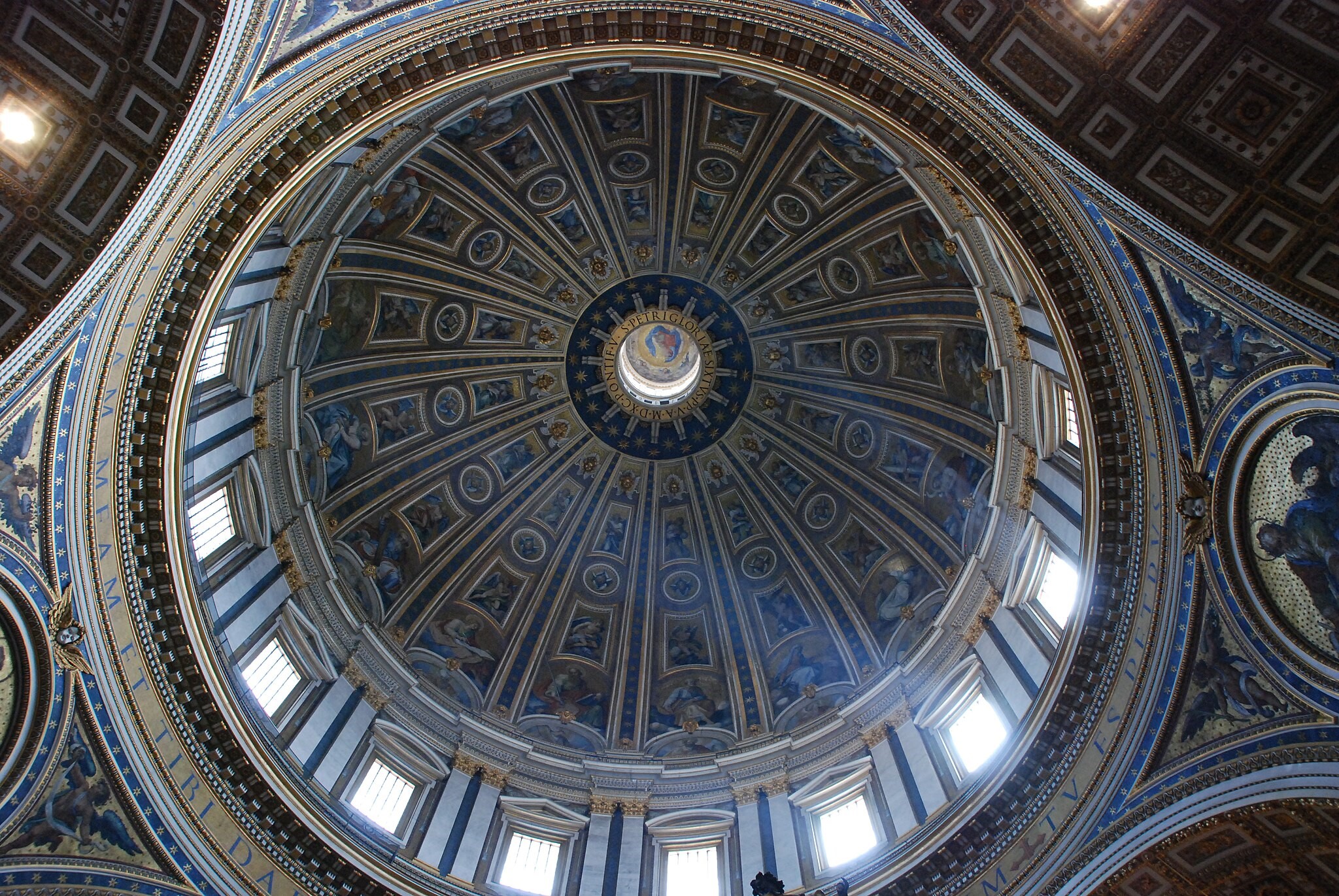
With its majestic dome that dominates the Vatican skyline, St. Peter’s Basilica became a major pilgrimage destination during the Middle Ages and has inspired artists and architects for centuries, attracting attention for its rich blend of spiritual and artistic expression.
Mark concludes:
“In addition to displaying breathtaking craftsmanship and its historical and religious significance, St. Peter’s Basilica stands out as a beacon of Renaissance art and architecture. This is why I’ve chosen it as my Class ACT.”
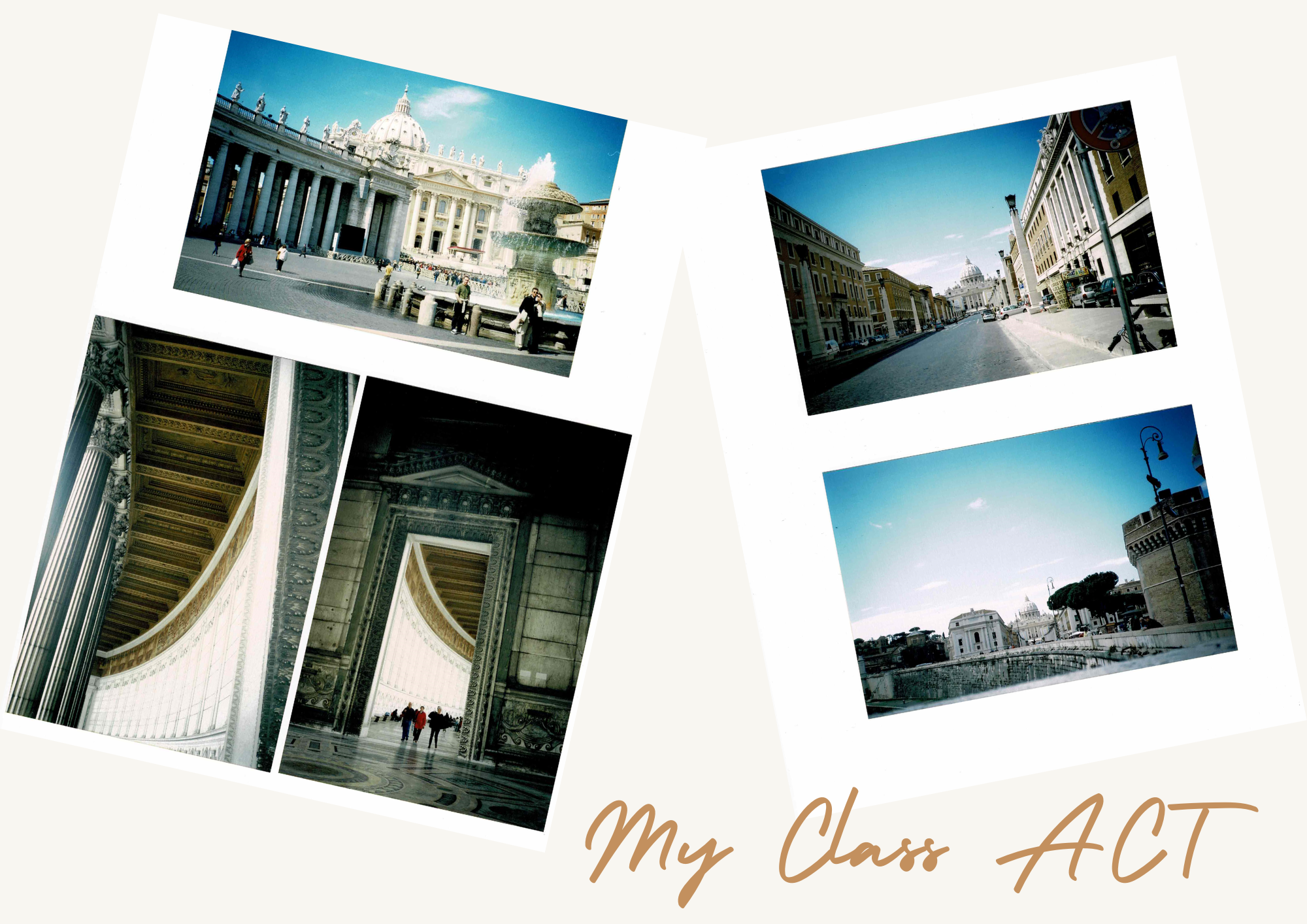
Image credits:
Gabriella Clare Marino via Unsplash
MarcusObal, CC BY-SA 3.0 <https://creativecommons.org/licenses/by-sa/3.0>, via Wikimedia Commons
Staselnik – Own work, CC BY-SA 3.0, https://commons.wikimedia.org/w/index.php?curid=30153735
Mark Thornton’s own photos

